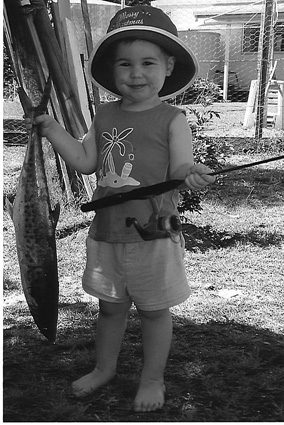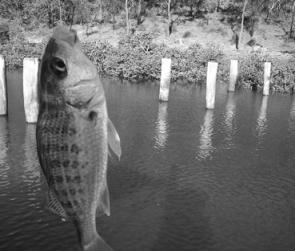Bring on summer I say! I want my fish to be aggressive and hungry and there is little doubt that as the weather warms up so will the fishing. Not that I want to give away all the winter species. Mackerel and salmon can stay around all year and they pretty much do. They just don’t seem to appear on the catch reports as often during summer.
Still, that makes up for the great fishing season we are about to move into. This is the season to target bream as they start to fire up and good quality live bait is a little easier to get a hold off.
I mentioned some of the rocks on the southern side of Facing Island in last month’s article. These rock formations are great locations when the winds are from the north or in light southerly breezes. There are better places to be when winds over 10 knots blow from the south and conditions become sloppy and uncomfortable.
This side of the island is best fished on a making tide as you anchor near the structure and cast directly into it. This is not the location to attempt drifting as unpredicted swell could move a boat fisher onto rocks – with obvious consequences.
After rounding Gatcombe Head, follow the channel markers to the rocks of East Point Ledge. This structure holds all species of bream – silver, black and collared sea bream.
There are plenty of barnacle encrusted rocks to attract and hold bream and also parrot, sweetlip and queenfish. This structure is fairly close to the island and depth varies from 3-8m.
One of the most fished formations on this side of the island is Sable Chief Rocks. This rocky structure sits just off the Facing Islands but is known for holding some quality mackerel. Spanish are caught here but spotted mackerel tend to prevail in the catch reports. The larger Spanish seems to be common in the more open waters of the harbour.
On the western side of Gatcombe Head, Manning Reef and Farmers Reef are worth checking out. The water whistles past both locations so sensible anchoring and tackle are required. Both locations are worthy bream haunts.
The oyster encrusted rocks at Observation Point make this place an ideal bream location. However, it isn’t a great location for boating due to its depth. It’s a good spot to attack on foot after picnicking on the island.
I am a fan of the tributaries of Graham Creek and the small derelict jetty structure of Rawbelle Creek is a fabulous spot to target early summer bream. The old pylons of the jetty are great fish attractors. This little creek is only about 20m wide so you can select a central location and set yourself up to pepper any number of mangrove drains on both sides for that elusive mangrove jack. Grunter is a common catch along this creek.
Just down the road a bit, Targinie Creek has a lot of fishing variables. There is plenty of structure at the mouth of the creek in 14m of water. Any sounder will locate this structure and it’s worth taking a couple of drifts over this area to check out what is below. It is possible to snag some cod and even get hit by threadfin salmon here.
On the northern edge, directly at the mouth is quite a large sand bar and here you can hook up to some elbow slapping whiting. I prefer this location on a rising tide in the late afternoon just as the sun starts to set. The dappled light through the mangroves always seems to bring on the bites.
Further down Targinie Creek, where the creek divides into four smaller tributaries, bream will be found hunting along the drains as the food escapes on a falling tide. Targinie is protected from all winds and has deep holes along both mangrove-lined banks.
This time of the year you have to go a long way to beat Rock Cod Shoals for consistent catches. In the cooler months I seem to have more success in the deeper holes of the southern corner. These holes can be 25m or more. As the weather warms up I start moving to the shallows of the central shelf, which start off with depths around 8m.
As the weather starts warming up a lot of fish start coming alive on the Gladstone wrecks. Start off with the Bindaree at the top of Facing. These locations can be hot or cold so if I don’t hook up when I arrive I try elsewhere.
Facts
Reef Closures
Just a little reminder that the reef closures for 2006 are from 16 October to 24 October; 14 November to 22 November; and from 14 December to 22 December.
The closures apply to all waters on Queensland’s east coast north of a line of latitude 24, 50 minutes South (near the mouth of the Burnett River and near Waddy Point on Fraser Island). The closures start and finish at midnight.

November is the time for the bream to bite like this Targinie Creek version.

Hayden, with the help of Uncle Mal, shows that spotty mackerel are still around Rodd Harbour.

Grunter brought from the old jetty in Rawbelle Creek.




